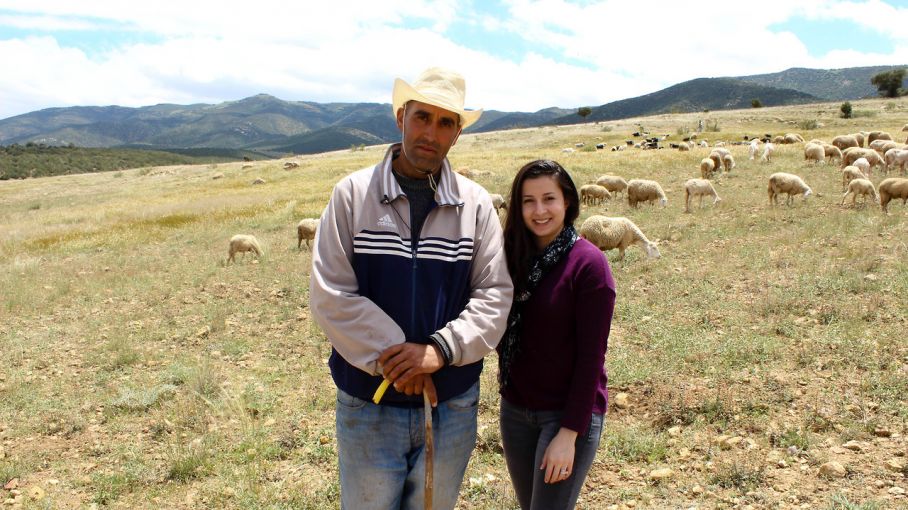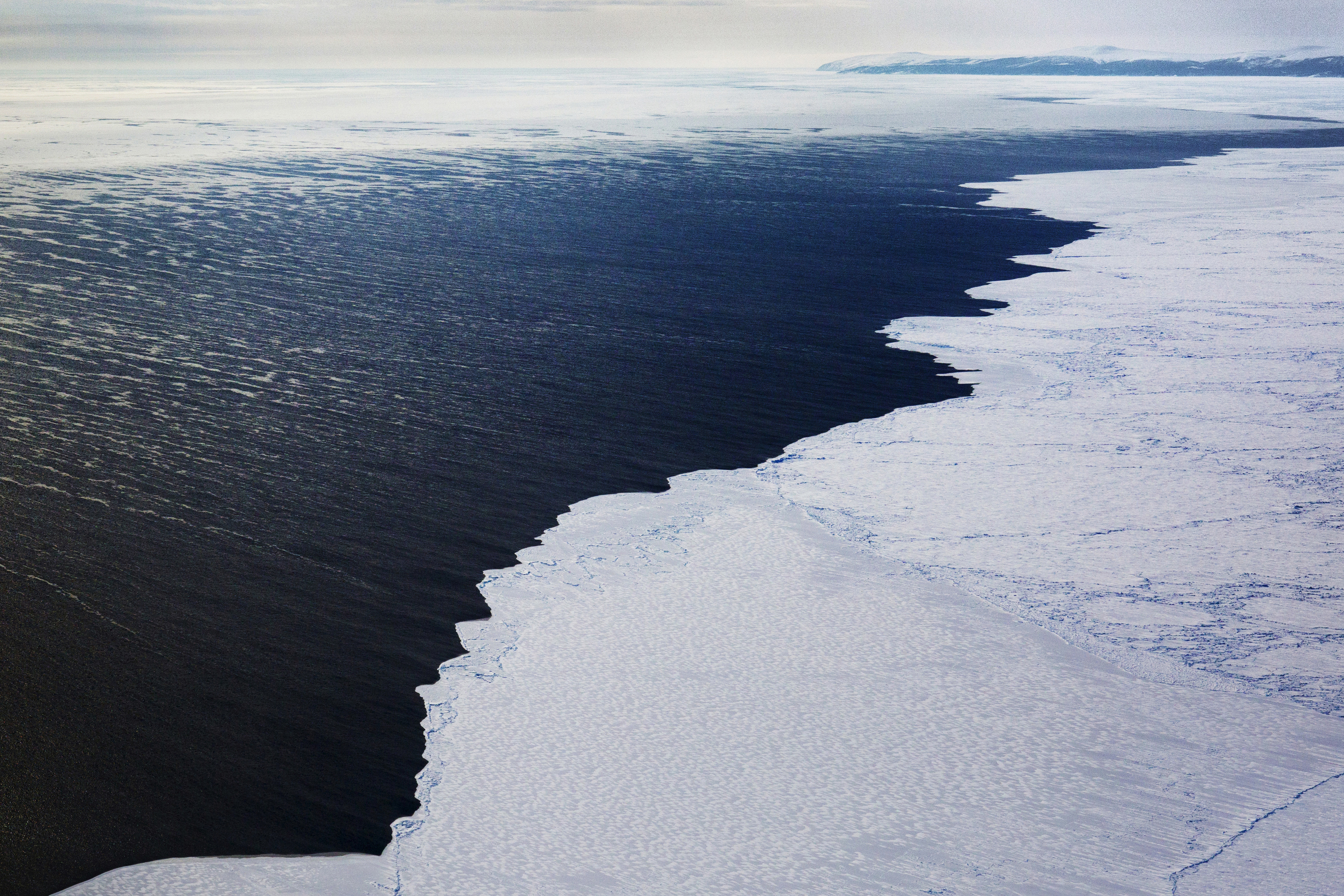KOTZEBUE, Alaska—In this Far North village, no animal provides more protein to fill freezers than the bearded seal. A single seal can supply hundreds of pounds of meat, enough to feed a large, extended family for a winter.
For generations, every late June and early July, native hunters like Ross Schaeffer and his niece Karmen Schaeffer Monigold have motored through the broken sea ice of Kotzebue Sound in northwestern Alaska, looking for seals basking on frosty rafts. But this year, temperatures were close to 70 degrees, there was no ice in sight, and the seals had already migrated north.
This seal-hunting season was the shortest in memory, lasting less than a week, compared with the usual three weeks.
Schaeffer and Monigold did manage to get a few animals, but the conditions were nothing like Schaeffer, 68, had seen before. By the third week in June, when Monigold would usually be dressed for cold, she drove out to check on her drying seal hide wearing flip-flops and shorts.
"Every year we've gone out, it's getting harder and harder because the ice is so rotten by the time it's time to go hunting that the seals are hard to find," Monigold says.
In Kotzebue, as temperatures and ice become increasingly unpredictable, hunters worry their children and grandchildren will no longer be able to participate in the traditional seal hunt. Kotzebue is among the largest of roughly 40 Alaska Native communities on the coast between Bristol Bay and Kaktovik that rely on bearded seal.
Kotzebue's changing seal season is part of another chapter of Alaska's accelerated climate change story, which is threatening the food, economics, and culture of Native communities.
The longtime patterns of many animals are changing. For example, the timing of caribou migration has been later, which scientists say may be linked to warmer temperatures. And in the Bering Sea, wild weather and unusual sea ice patterns have hampered walrus hunting, causing serious food shortages in some villages.
An Alaska Hotspot
The winter of 2014 was the warmest ever measured across Alaska, and this summer has so far followed a similar pattern, according to the National Weather Service, with hot, dry conditions fueling hundreds of wildfires. It was the warmest May ever recorded in Kotzebue-- 8 degrees warmer than usual.
"It started raining, and it rained every night for about four or five nights. It rained hard. That rain is so warm it just seeps right through the ice and the ice pops up and it's all rotten already," says Schaeffer, who has been hunting for about 60 years. "It's not like it used to be."
Kotzebue in particular is a hot spot in the state. Six of the ten warmest winters in the village on record have occurred since 2000. Climatologists say the village is likely to have more unusual heat this summer and into the fall.
Above-average sea surface temperatures contributed to Alaska's abnormally warm winter when increased southerly winds flowed over the ocean and spread inland. Next winter could be cooler, but over the long term, experts say that warmer and wetter weather could become more common.
"The decades-long trend seems pretty clear: less and less sea ice," says Rick Thoman, climate science and services manager for the National Weather Service in Alaska.
Ice coverage in Kotzebue Sound has been shrinking steadily since the 1950s, with acceleration in recent years.
"There is open water in the Chukchi Sea, almost up to Barrow now, which is remarkably early," Thoman says.
Seals Follow the Ice
Bearded seals, called ugruk in the Inupiaq language, migrate up and down Alaska's northwest coast, from the Bering Sea to the Chukchi and Beaufort seas, following the ice as it advances in winter and retreats in summer, says Peter Boveng, polar ecosystems program leader at NOAA's Alaska Fisheries Science Center.
Scientists estimate there are roughly 300,000 bearded seals in the Bering Sea breeding population and an unknown number of others that breed in the Chukchi and Beaufort seas in Alaska, he says. As the sea ice patterns change, there could be changes in the places where the animals spend time, he says.
During Kotzebue's traditional hunting season in late June, bearded seals are hauling out on ice. They depend on the ice to give them platforms for basking, he says, which raises their skin temperature and stimulates hair growth to fill out their coats. That's what complicated the hunting; seals will only stay in the waters near Kotzebue as long as the ice conditions are right.
"If the animals are really in the peak of their molt, they will probably want to stay with the ice. And if the ice goes out earlier in Kotzebue Sound, Kotzebue really could see be a big decline in the number of animals visiting that area on their way north," Boveng says.
There is no evidence so far that the changes in the ice patterns are harming seals. However, if they can't find ice of the quality they need, scientists say they might not be able to grow adequate coats, which protect their skin from abrasions and infections, Boveng says. (Read about weird changes in other ocean life linked to global warming.)
In 2011, several species of ice-dependent Alaska seals, including bearded seals, were part of an unusual die-off. Animals turned up dead or sick with abnormal coats, among other symptoms, he says. It is unclear whether there was a link between the event and climate change, however.
There was once a time when Kotzebue relied on beluga whales for much of its subsistence, says Alex Whiting, an environmental specialist for the Native Village of Kotzebue. But then, in the 1980s, many belugas stopped coming into the sound for reasons not entirely understood. Hunters are adaptable, he says, and will find ways to get their seals, even if the animal patterns change.
Nutritious and Spiritual
Pound for pound, caribou is the most important wild food source in Kotzebue, followed closely by bearded seal, a nutritious, lean protein rich in omega 3s.
"Large adult bearded seals in particular provide singular types of meat and oil products that are not replaceable," Whiting says. "If the window to harvest them is missed, it will be another year before the opportunity arises again."
Monigold says her main concern with the changing seal season is spiritual. Taking children in the village to hunt instills in them a sense of purpose and connects them to culture. When they take a bearded seal, for example, she teaches her sons to put fresh water in the mouth to release the spirit into the ocean, a gesture meant to bring more seals back the next year. Sharing the meat teaches them respect and gives confidence.
Schaeffer worries that if the warming trend continues, his grandchildren will eventually lose the opportunity to hunt bearded seals in the sound. His grandparents traveled by dogsled and relied entirely on food they caught and gathered but so many of their traditions have been lost in a relatively short time. Technology was the first agent of change; now it's climate.
Seal is a soul food for indigenous Alaskans. When Monigold goes without it and other native foods while traveling, she feels listless and looks forward to a meal at home.
"As soon as I take a bite, it's like all of a sudden I'm me again," she says.

Education Resource
Meet the Journalist: Yasmin Bendaas
Pulitzer Center Grantee Yasmin Bendaas discusses her reporting in Algeria—a 2012 project on the...

Education Resource
Meet Journalists Julia O'Malley and Katie Orlinsky
What happens when whale meat starts to spoil? Julia O'Malley, a reporter based in Anchorage, Alaska...



























